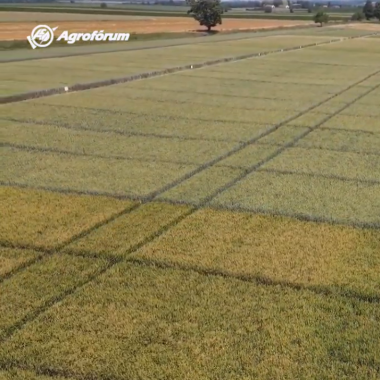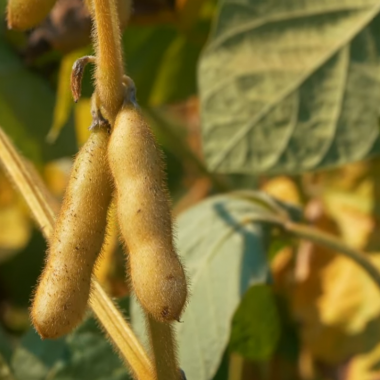SOIL
One of the major advantages of growing sorghum is that it can be produced successfully in areas prone to drought and stress, where the conditions do not favour other cereals or other arable crops. Virtually all arable fields except extreme saline soils, very poor sands and acidic soils below pH 4.5 are suitable for sorghum production. Of course, the quality of the soil and its nutrient capacity have a major influence on the expected yield, as modern hybrids may yield as much 10-12 t/ha under favourable conditions.
FERTILISATION
Sorghum requires somewhat less nutrients than maize; nevertheless, to provide for a yield in the desired quantity and quality, the necessary nutrients should be provided.
Based on Hungarian experimental results and practical experience, nutrients should be provided in the amounts as follows: Nitrogen: 80-100 kg/ha, Phosphorus: 60-70 kg/ha, Potassium: 70-90 kg/ha.
The method and timing of application depends on the selected type of fertiliser and the available technical options. Usually, the entire amount of P and K and 20-30% of N are provided in the autumn (to promote the decomposition of stem residues). The remaining N should be broadcast in two applications before sowing or in one application at sowing or, if possible, in one application when the plants have 6-8 leaves, as sorghum responds particularly well to nitrogen in this phenological stage. The commonly applied best practice is applying nitrogen in a dose of 30-40 kg/ha, using a cultivator. It is not recommended to use too much nitrogen (when the dose of the active ingredient exceeds 150 kg/ha), as it may promote Fusarium infestation under weather conditions which favour the disease and also because it may diminish your profit as the return on the investment is not guranateed. In the case of grain sorghum, sulphur is also essential, as it has been shown to improve the nutritional value of the grains with special regard to their protein content, a feature particularly important for the feed industry. For this reason, it is recommended to provide the plants with sulphur in a foliar application as base or top dressing. Foliar fertilisers are recommended anyway when sorghum has 8-10 leaves.
Foliar fertilisers are effective because the foliage of sorghum plants has a sufficiently large surface area to absorb the nutrients (sulphur, manganese, zinc, boron) that are important at this stage.
TILLAGE
As sorghum seeds are tiny, it is particularly important to prepare an even, fine crumbled seedbed with a smooth surface, to provide for a balanced distribution of light, heat and air which in turn will result in uniform germination and, later on, uniform plant development. It may prove to be quite difficult to create such a seedbed after pre-crops that leave a lot of stem residue (e.g. maize); nevertheless, according to national and international experience, quality sowing may also be achieved in no-tillage systems and by state-of-the-art direct drilling. As for seedbed quality, the best pre-crops are early-emerging ones such as cereals, peas or rapeseed.
SOWING
Sorghum needs a lot of heat, so it should be sown when soil temperatures will surely not drop below 11-13 C. Therefore, sorghum is typically sown after sunflower and maize and may be seeded as late as mid-May. Beyond the optimum sowing period (late May - early June), only hybrids with shorter growing seasons are recommended to be sown, and even in their case the weather may have a major impact on maturation. The recommended sowing methods is drilling. The diameter of holes in the seeding disc should be 1,8-2 mm. The recommended seeding rates under sub-optimum conditions and suitable conditions combined with intensive cultivation are 250 000 seeds/ha and 300 000 seeds/ha, respectively. At this rate, grain sorghum is less prone to tillering and the development of side shoots will be optimal. Breeders try to encourage the genetic trend to develop strong side shoots. The desired target for grain sorghum is the development of one main shoot (main panicle) and possibly two side shoots (side panicles), which can reach maturity without problems. The development of too many side shoots should be avoided, otherwise the moisture content of grains at harvest will be uneven. Side shoots appear later and develop slower than the main shoot, the grains in their panicles mature later (if at all), they compete for nutrients and water with the main shoot, delay harvest and give rise to additional drying costs. Recommended row spacing depends on what your cultivator can manage (cultivators are recommended tools of plant care for sorghum). The optimum row spacing is 45 cm, but in that case, the stand may only be harvested by a cereal header. A more common solution is sowing with a row spacing of 76 cm which allows for inter-row cultivation.
CROP PROTECTION
The list of recommended pesticides and herbicides includes products registered at the time of issuing this brochure (October 2019). The list of products currently registered for sorghum is available at the webpage of NÉBIH (National Food Chain Safety Office): https://novenyvedoszer.nebih.gov.hu/Engedelykereso/kereso When using crop protection products, always follow the instructions in the authorisation document! Sorghum is a monocotyledonous crop and therefore the control of monocot weeds requires a specific solution. To complement the usually applied fungicide treatment, Isterra sorghum seeds are always coated with CONCEP III® antidote. Seed-borne monocots may only be controlled by pre-emergent or early post-emergent herbicides. The herbicide antidote CONCEP III® protects the crop against the active ingredient S-metolachlor. There is currently no scientifically proven and safe way to control the perennial monocot Johnsongrass in sorghum! The only available, cost-effective option is controlling it in the pre-crop or in the autumn stubble. Its presence in sorghum fields may result in severe yield loss, depending on the level of infestation. For this reason, it is not recommended to grow sorghum in areas infested with Johnsongrass!
Weed control in sorghum includes two steps: a base treatment, performed between sowing and the 3-leave stage and a complementary post-emergent treatment where necessary, against dicot weeds when sorghum has 3 to 6 leaves.
BASE TREATMENT
Against seed born monocot and dicot weeds, base treatment herbicides may ONLY be applied where sorghum seeds are treated with the antodote CONCEP® III!
Pre-emergent application (after seeding, before emergence): pre-emergent treatment will only be effective if there is 10-20 mm of rain within 2 weeks of the treatment. GARDOPRIM PLUS GOLD® (312 g/l S-metolachlor + 187 g/l terbuthylazine) dose: 4 l/ha OR! DUAL GOLD 960EC® (960 g/l S-metolachlor) dose: 1.4-1.6 l/ha OR! LECAR® (960 g/l S-metolachlor) dose: 1.4-1.6 l/ha
POST-EMERGENT TREATMENT
Against seed born and perennial dicot weeds: They may only be controlled when sorghum has 3-6 real leaves. If the recommended hormonal products are applied too late, they may impair the yield, as they compromise fertilisation and may even sterilise the plants!
Registered Syngenta A.G., CAMBIO® and BASF trade names include CONCEP III®, GARDOPRIM PLUS GOLD®, DUAL GOLD 960EC®, LECAR®, BANVEL 480S®, CASPER®, PEAK 75WG® and CADENCE 70WG®.
The control of dicot weeds is essential. They do not only reduce the yield, but species like thorn apple (Datura stramonium) also contaminate grain lots. The seeds of thorn apple are identical in size to sorghum so cannot be easily removed and they are toxic; their presence is not allowed in grains lots. CAMBIO® (320 g/l bentazone + 90.0 g/l dicamba) dose: 2-3 l/ha BANVEL® 480S (480 g/l dicamba) dose: 0,5 l/ha CASPER® (50 g/kg prosulfuron + 500 g/kg dicamba) dose: 0,3-0,4 l/ha PEAK 75WG® (750 g/kg prosulfuron) dose: 15-20 g/ha CADENCE 70WG® (700 g/kg dicamba sodium salt) dose: 340 g/ha
Other treatments: Sorghum does not need protection against fungal pathogens, not being susceptible to such diseases. It is not damaged by pests either. Depending on the season, pests like aphids or very rarely the larvae of the cotton bollworm may require control; in such cases, products with a temporary permit may be used.
PLANT CARE
Interrow cultivation is specifically recommended for sorghum.
Experimental results clearly indicate that plant growth is accelerated and the general condition of the stands is improved by cultivation. The aim is therefore not weed control, but the creation of more favourable soil conditions for sorghum development. Where possible, a single application of nitrogen is also recommended.
HARVEST
When the seeds of grain sorghum mature, the stalks are still green. Optimally it is harvested when the moisture content of the grains, measured in the combine, is 16.5-17%. Typically, plants reach this stage right after sunflower has been harvested, in the second decade of September (10-25 September, depending on the weather). The stalk is cut 8-10 cm below the panicle (not entire plant is harvested). Plant residues should be crushed with flail mower (possibly combined with the harvester). The large mass of stem residue, when incorporated into the soil, is an excellent green manure. For best results, plant residues should be crushed by discing after flail mowing and before incorporation into the soil. To facilitate harvesting, desiccation may be applied where necessary (e.g. late sowing, rainy weather, weed infestation). The herbicides registered for the purpose should be applied on a case-by-case basis. Harvested grains should be stored with a moisture content below 14%.


